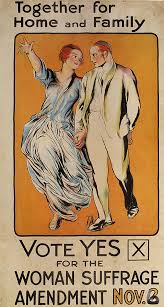The Significance of Executive Order 11246
Executive Order 11246, signed by President Lyndon B. Johnson on September 24, 1965, is a landmark piece of legislation that prohibits federal contractors and subcontractors from discriminating in employment decisions based on race, color, religion, sex, or national origin. The order aimed to promote equal opportunity and eliminate discriminatory practices in the workplace.
Key Provisions of Executive Order 11246:
- Affirmative Action: The order requires federal contractors to take affirmative action to ensure equal employment opportunities for all individuals without regard to their protected characteristics.
- Non-Discrimination: It prohibits discrimination in hiring, promotion, compensation, and other employment practices based on specified characteristics such as race or gender.
- Equal Pay: The order promotes equal pay for equal work without regard to gender or other protected characteristics.
- Reporting Requirements: Federal contractors are required to maintain records and submit reports demonstrating their compliance with the order’s provisions.
Over the years, Executive Order 11246 has been instrumental in advancing workplace equality and diversity. It has paved the way for increased representation of marginalized groups in the workforce and has helped create a more inclusive work environment across industries.
While the order has faced challenges and criticisms over time, its core principles remain essential in promoting fairness and equity in employment practices. By upholding the values of diversity and inclusion, Executive Order 11246 continues to be a cornerstone of efforts to combat discrimination and foster a more just society.
In conclusion, Executive Order 11246 stands as a testament to the ongoing commitment to equality in the workplace and serves as a reminder of the importance of upholding principles of non-discrimination and equal opportunity for all individuals.
Understanding Executive Order 11246: Key FAQs and Insights
- What is Executive Order 11246?
- When was Executive Order 11246 signed?
- Who does Executive Order 11246 apply to?
- What are the key provisions of Executive Order 11246?
- How does Executive Order 11246 promote workplace equality?
- Are there reporting requirements for compliance with Executive Order 11246?
What is Executive Order 11246?
Executive Order 11246, signed by President Lyndon B. Johnson on September 24, 1965, is a significant piece of legislation that prohibits federal contractors and subcontractors from engaging in discriminatory employment practices based on factors such as race, color, religion, sex, or national origin. This executive order mandates that federal contractors take affirmative action to ensure equal employment opportunities for all individuals and promotes non-discrimination in hiring, promotion, compensation, and other employment decisions. Executive Order 11246 plays a crucial role in advancing workplace equality and diversity by fostering inclusive environments and combating discriminatory practices in the workforce.
When was Executive Order 11246 signed?
Executive Order 11246 was signed by President Lyndon B. Johnson on September 24, 1965. This significant executive order aimed to combat discrimination in employment practices among federal contractors and subcontractors, promoting equal opportunity and affirmative action to ensure fairness and inclusivity in the workforce. The date of its signing marks a pivotal moment in the history of workplace equality and diversity efforts in the United States.
Who does Executive Order 11246 apply to?
Executive Order 11246 applies to federal contractors and subcontractors who do business with the federal government. This includes companies and organizations that have contracts or subcontracts with the government amounting to a specified dollar threshold. These entities are required to comply with the non-discrimination and affirmative action provisions outlined in Executive Order 11246 to ensure equal employment opportunities for individuals regardless of race, color, religion, sex, or national origin. By extending its reach to federal contractors, the order aims to promote fairness and inclusivity in the workplace and advance the principles of equality and diversity in employment practices.
What are the key provisions of Executive Order 11246?
One of the frequently asked questions regarding Executive Order 11246 pertains to its key provisions. The order, signed by President Lyndon B. Johnson in 1965, includes essential provisions aimed at promoting equal opportunity and eliminating discrimination in the workplace. Some of the key provisions of Executive Order 11246 require federal contractors to implement affirmative action measures to ensure equal employment opportunities for individuals without regard to race, color, religion, sex, or national origin. Additionally, the order prohibits discriminatory practices in hiring, promotion, compensation, and other employment decisions based on protected characteristics. It also emphasizes the importance of equal pay for equal work and mandates reporting requirements for federal contractors to demonstrate compliance with the order’s provisions. These key provisions underscore the significance of Executive Order 11246 in advancing workplace equality and fostering diversity and inclusion in the workforce.
How does Executive Order 11246 promote workplace equality?
Executive Order 11246 promotes workplace equality by requiring federal contractors and subcontractors to take affirmative action to ensure equal employment opportunities for individuals regardless of their race, color, religion, sex, or national origin. By prohibiting discrimination in hiring, promotion, compensation, and other employment practices based on these protected characteristics, the order helps create a level playing field for all employees. Additionally, Executive Order 11246 emphasizes the importance of equal pay for equal work and sets reporting requirements to monitor compliance with its provisions. Through these measures, the order plays a crucial role in advancing workplace equality, fostering diversity, and combating discriminatory practices in the labor market.
Are there reporting requirements for compliance with Executive Order 11246?
Yes, there are reporting requirements for compliance with Executive Order 11246. Federal contractors and subcontractors are mandated to maintain records and submit reports that demonstrate their adherence to the order’s provisions. These reporting requirements help ensure transparency and accountability in employment practices, allowing oversight of efforts to promote equal opportunity and eliminate discrimination based on race, color, religion, sex, or national origin. By documenting their compliance with Executive Order 11246, organizations can contribute to the advancement of workplace equality and diversity while upholding the principles of non-discrimination and fairness in employment.



